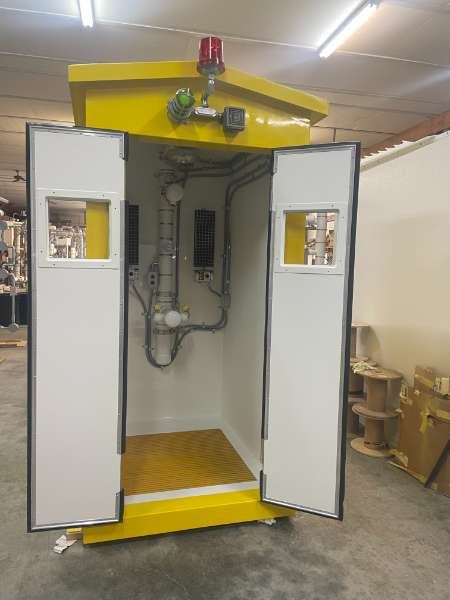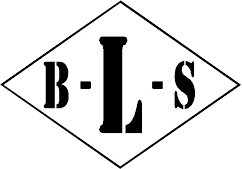The Evolution of Drench Showers: From Basic Designs to Modern Safety Solutions

Drench showers play a vital role in workplace safety, particularly in hazardous environments where quick action can mean the difference between minor irritation and severe injury. Over the years, these emergency safety fixtures have undergone significant transformations, evolving from rudimentary designs to sophisticated systems that comply with modern safety standards.
History of Drench Showers
Early Designs and Limitations
The concept of drench showers can be traced back to the early 20th century, when industries began recognizing the need for emergency equipment to treat chemical spills and burns. Early designs were rudimentary, often resembling simple water spigots or hoses that lacked the pressure, coverage, and accessibility needed to mitigate injuries effectively.
These early models were designed with basic utility in mind, prioritizing immediate water access over functionality. They often required manual operation, meaning employees had to fumble with valves or levers to activate the water—a serious limitation in high-stress emergency situations. Furthermore, the water flow was inconsistent and often insufficient to thoroughly rinse contaminants from the skin and eyes.
As industries expanded and workplace hazards grew more complex, it became clear that more reliable and efficient drench showers were necessary to ensure employee safety.
Innovations in Material and Design
The mid-20th century marked a turning point in drench shower design. Advancements in materials such as stainless steel and corrosion-resistant coatings allowed manufacturers to create more durable and hygienic equipment.
During this period, the focus shifted toward accessibility and ease of use. Push handles, pull rods, and foot pedals were introduced to enable quick activation, even when employees were incapacitated or had limited mobility. Additionally, designs were standardized to ensure water could reach all areas of the body, providing thorough decontamination.
Despite these improvements, early drench showers still fell short of meeting uniform safety standards. The lack of temperature regulation and inconsistent water flow meant that workers were sometimes exposed to water that was either too hot or too cold, further complicating emergency responses.
Key Features of Modern Drench Showers
Meeting Safety Standards with Modern Showers
Today, drench showers are held to rigorous safety standards set by organizations such as the American National Standards Institute (ANSI) and the Occupational Safety and Health Administration (OSHA). These regulations ensure that modern drench showers provide:
- Adequate Flow Rates: ANSI Z358.1 requires drench showers to deliver a minimum of 20 gallons per minute (GPM) of water for at least 15 minutes. This ensures thorough decontamination.
- Accessible Activation: Modern units must be operable within one second and remain operational without requiring the user to hold the valve open.
- Temperature Control: Tepid water, defined as 60–100°F (16–38°C), is essential to prevent thermal shock or scalding during use. Many systems now include temperature control valves or heated enclosures to maintain safe water temperatures.
- Corrosion Resistance: To ensure longevity, most modern drench showers are made from durable materials such as stainless steel, ABS plastic, or epoxy-coated steel.
Compliance with these standards ensures that drench showers are reliable, effective, and capable of protecting employees in emergency situations.
Additional Features of Modern Systems
In addition to meeting safety standards, today’s drench showers boast features that enhance usability and durability:
- Integrated Eye and Face Wash Stations: Many systems now combine drench showers with eye and face wash units, providing a comprehensive solution for chemical and particulate exposure.
- Emergency Lighting: Built-in lighting ensures visibility in low-light environments or power outages, allowing employees to locate and activate the shower quickly.
- Heated Enclosures: For outdoor or cold-climate installations, heated enclosures protect against freezing temperatures and ensure consistent performance year-round.
- Custom Configurations: Manufacturers like B-L-S Industries, Inc. offer tailored solutions to meet specific workplace requirements, such as compact designs for tight spaces or additional safety features for high-risk environments.
The Role of Technology in Enhancing Safety
Automated Monitoring Systems
The integration of technology into drench shower systems has revolutionized safety and maintenance practices. Modern units often feature automated monitoring systems that track usage, water temperature, and flow rates. These systems provide real-time data to facility managers, ensuring compliance with safety standards and enabling timely maintenance.
IoT-enabled drench showers can even send alerts when maintenance is required, reducing downtime and ensuring the equipment is always ready for use.
Improved Activation Mechanisms
In emergency situations, every second counts. Advanced activation mechanisms, such as motion sensors and proximity detectors, eliminate delays by triggering the shower as soon as an employee approaches. These systems are particularly valuable in environments where visibility may be compromised or where injured workers may struggle to operate manual controls.
Enhanced Water Filtration and Recycling
Water conservation is a growing concern, even in emergency scenarios. Some modern drench showers incorporate filtration and recycling systems that allow water to be reused in non-contaminated environments. These systems ensure environmental sustainability without compromising safety.
Virtual Training and Simulation
Technology has also significantly improved employee training. Virtual reality (VR) simulations and augmented reality (AR) tools allow workers to practice emergency procedures in a safe, controlled environment. These tools familiarize employees with drench shower operations and help them respond more effectively during real emergencies.
A Commitment to Workplace Safety
The evolution of drench showers is a testament to the ongoing commitment to workplace safety. From humble beginnings as basic water delivery systems, they have transformed into sophisticated, lifesaving devices that integrate advanced technology, user-friendly features, and stringent safety standards.
At B-L-S Industries, Inc., we take pride in being part of this journey. Since 1976, we’ve been dedicated to designing and manufacturing high-quality drench showers and eye and face wash stations that protect employees in hazardous environments. Based in Carl Junction, MO, our team understands the importance of reliability and compliance in workplace safety.
Whether you need a standard drench shower, a custom-designed system, or a heated enclosure for cold-weather conditions, we have the products and expertise to meet your needs. With over four decades of experience, we’re proud to be a trusted supplier for industries across the country.
Contact Us Today
When it comes to ensuring the safety of your employees, there’s no room for compromise. Choose B-L-S Industries, Inc. for emergency drench showers and eye and face wash stations that exceed expectations. Explore our product line and discover how we can help you create a safer workplace. Contact our team today to learn more. Let’s work together to protect your team and ensure compliance with the highest safety standards.
